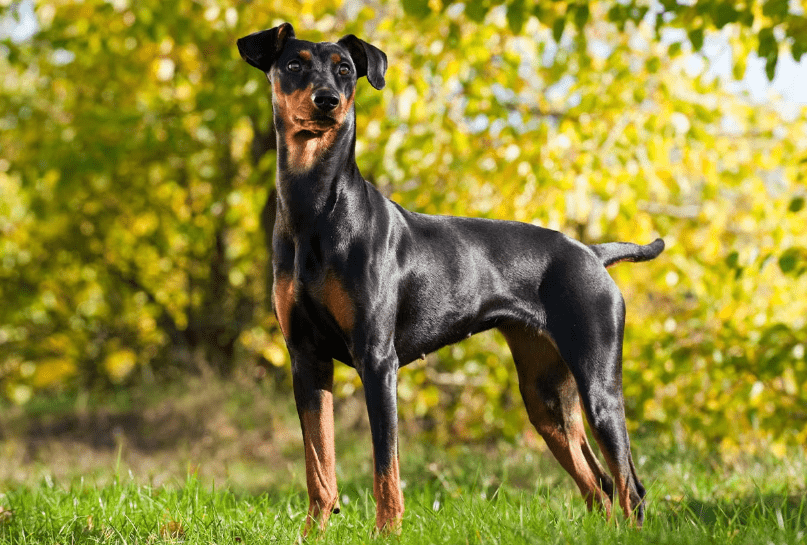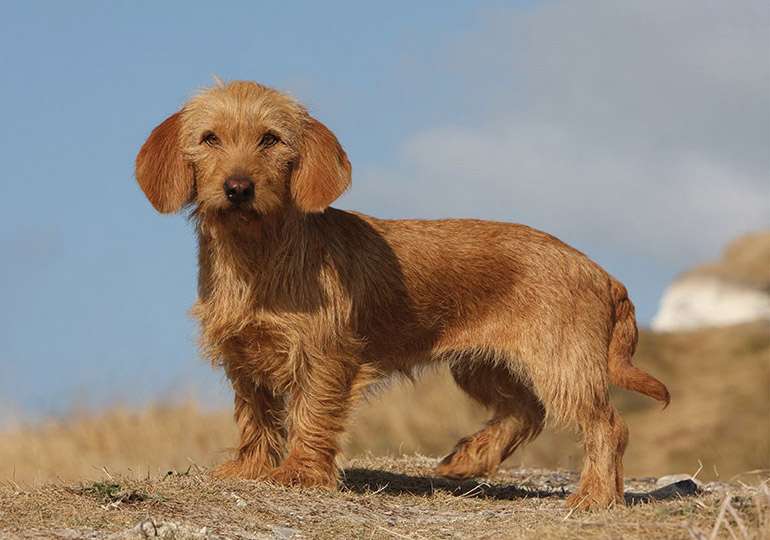
A member of the Pinscher and Schnauzer family of terriers, the German Pinscher is also known as the Deutscher Pinscher. In the years following World War II, the Pinscher came dangerously close to extinction. Werner Jung created a replica of it using four extraordinarily enormous Miniature Pinschers and one standard-sized animal. A litter was born in 1958, eight years after there had been no known births. In 1955, the Fédération Cynologique Internationale formally recognized the Pinscher.
Appearance
The German Pinscher is a medium-sized dog, weighing between 14 and 20 kg for dogs and between 45 and 50 cm for females at the withers. The dense, short, and smooth coat can be either self-colored red—which can range in intensity from a mild stag-red to a dark reddish brown—or black and tan.
Care as a Pet/ In Captivity

Feeding
One to two cups of high-quality dry dog food each day, divided into two or three meals, is the typical suggestion for feeding a German Pinscher. Based on average weight and exercise level, this sum was determined.
Grooming
The German pinscher sheds only slightly. The only real requirement is a weekly brushing to disperse skin oils and eliminate loose fur. In the spring and fall, when shearing tends to increase, you might need to add an extra brushing to keep up with the loose fur.
Depending on how unclean it gets, bathe your dog once a month at most. Additionally, inspect the nails every month to see if they require trimming. Additionally, check your dog’s ears at least once a week for wax accumulation, debris, or inflammation. Lastly, try to brush your teeth every day.
Exercise
German pinschers require a way to release their energy, and they will benefit from at least one to two hours of daily exercise. Long walks, jogging, cycling, hiking, and vigorous retrieve sessions are all effective forms of exercise for dogs. It’s preferable to have a place that is completely enclosed so your dog may run about and stretch its legs. Agility and other dog sports are great for pushing German pinschers physically and psychologically.
German pinschers have a propensity to pace, whine, or even engage in destructive behaviors like chewing when they lead a sedentary lifestyle or lack mental stimulation. This breed might not be right for you if you lack the time or the energy to properly care for it.
Table





